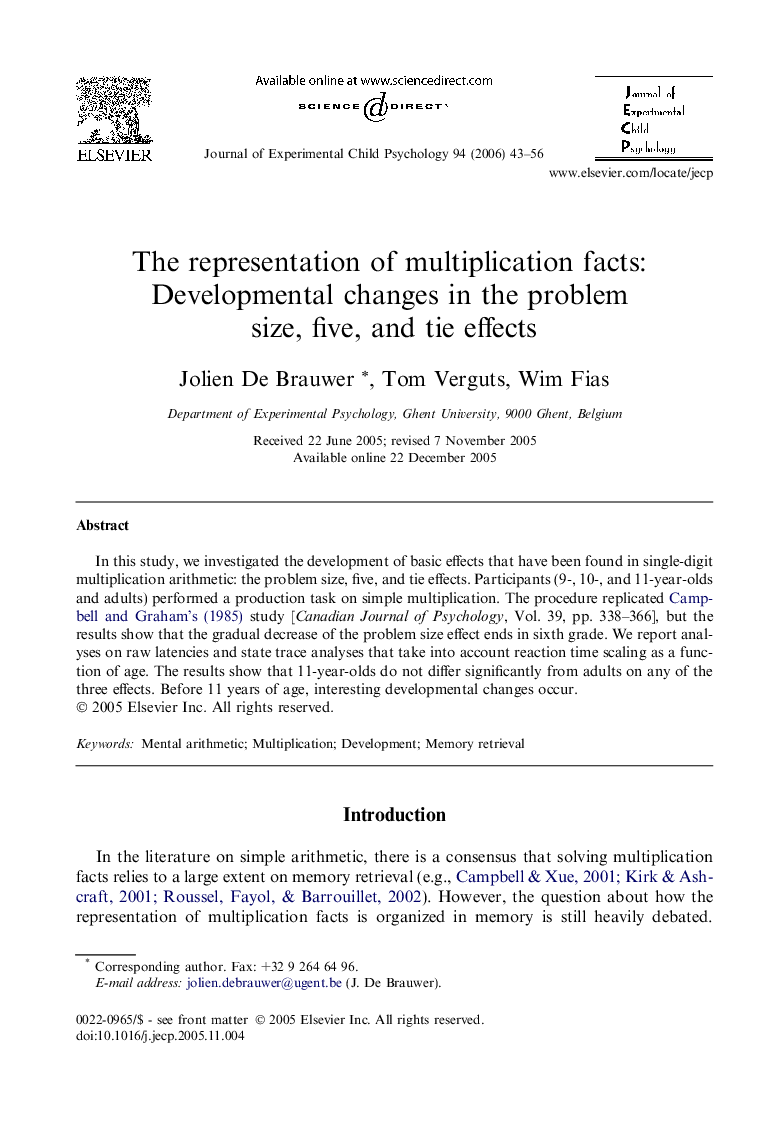| Article ID | Journal | Published Year | Pages | File Type |
|---|---|---|---|---|
| 918821 | Journal of Experimental Child Psychology | 2006 | 14 Pages |
In this study, we investigated the development of basic effects that have been found in single-digit multiplication arithmetic: the problem size, five, and tie effects. Participants (9-, 10-, and 11-year-olds and adults) performed a production task on simple multiplication. The procedure replicated Campbell and Graham’s (1985) study [Canadian Journal of Psychology, Vol. 39, pp. 338–366], but the results show that the gradual decrease of the problem size effect ends in sixth grade. We report analyses on raw latencies and state trace analyses that take into account reaction time scaling as a function of age. The results show that 11-year-olds do not differ significantly from adults on any of the three effects. Before 11 years of age, interesting developmental changes occur.
